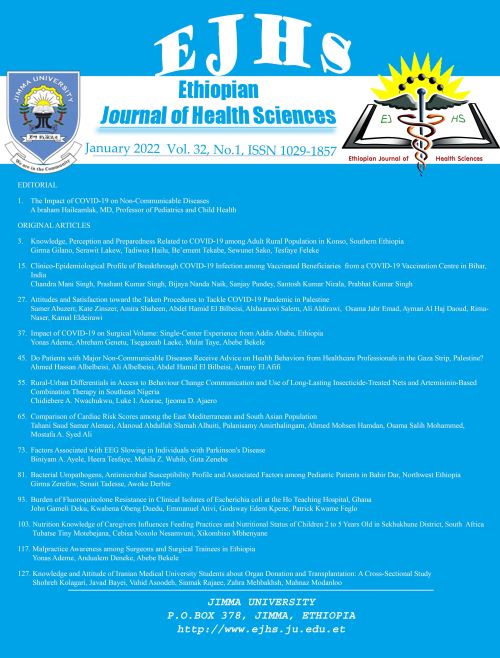Main Article Content
Rural-Urban Differentials in Access to Behaviour Change Communication and Use of Long-Lasting Insecticide-Treated Nets and Artemisinin-Based Combination Therapy in Southeast Nigeria
Abstract
BACKGROUND፡ As Malaria continues to take a heavy toll on the life and economy of Nigerians, The National Malaria Elimination Programme uses behaviour change communication (BCC) to promote the use of Long-Lasting Insecticide-treated Nets (LLIN) and Artemisinin-based Combination Therapy (ACT) to combat malaria. This study examined the impact of BCC on the use of LLIN and ACT in Southeast Nigeria.
METHODS: A structured questionnaire was used to gather data from 480 respondents in urban and rural communities across five states. Analysis of data was done using percentages, chi-square and logistic regression.
RESULTS: Findings showed weak effect of BCC on LLIN and ACT use despite achieving high (93.75%) exposure. Only 45.1% and 45.7% of the respondents used LLIN and ACT respectively. Urban residents were found to sleep under LLINs and use ACTs more than rural dwellers. Regression results showed that newspapers (OR=1.341) and the Internet (OR=3.216) increased the odds of LLIN use in the rural areas and magazines (OR=1.837) in the urban areas. Television (OR=2.375; P=0.002) and the Internet (OR=6.063; P=0.001) increased the odds of ACT use in the urban areas. Education was found to be a positive predictor of LLIN use in the rural (OR=4.645; P=0.011) and urban areas (OR=6.102) as well as ACT use in the rural (OR=7.268; p=0.002) and urban areas (0R=6.145; P=0.009).
CONCLUSION: Access to behaviour change communication though very high has not achieved the desired behaviour change. The National Malaria Elimination Programme should produce appropriate messages to address barriers to LLIN and ACT use.






